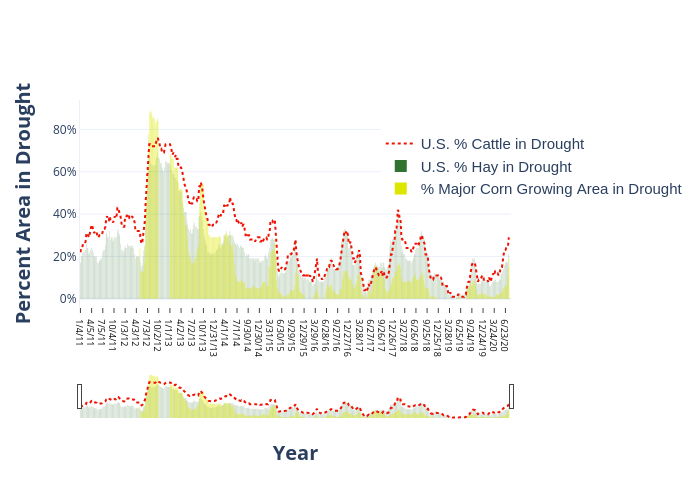Weather Impacts on Feedyard Performance
The Daily Livestock Report for April 5th included data on Kansas feedlot performance. The data are based on Kansas State University’s Focus on Feedlots February report that shows the impacts of severe winter weather on Kansas feedlot performance.
The Focus on Feedlots February report showed average daily gain (ADG) of steers sold in February was 3.43 pounds, which is down 0.5 pounds or -1.4% from 2018. Looking at the 5-year average, ADG was down by 4.1%.
According to the report, more pounds of feedstuff were needed per pound of gain. The figure below shows major cattle feeding states and the percent of average precipitation for January-February-March. This doesn’t tell the whole story, but it does show significant cattle numbers in Nebraska, Colorado, Iowa, and Kansas experienced very wet and muddy conditions this winter. The cost of gain increased (based on feedlots participating in the Kansas survey) for steers closed-out in February by 5.7% ($4.53/cwt) compared to February 2018.
Interactive Chart: Mouse over the chart to see county level data
This trend is consistent with what we’re seeing across the country. According to the Daily Livestock Report and data released by USDA “the Federally Inspected U.S. steer carcass weight was 866 pounds, down 12 pounds from a year earlier and 2 pounds below the prior 5-year average (2013-17).”
With a wet spring predicted, we could continue to see lower weights as pen conditions continue to stay muddy. Over the next week we will see an active weather pattern with Nebraska and Iowa seeing fairly good precipitation (see map below). We will continue to track conditions as they evolve over the next several weeks.






